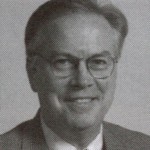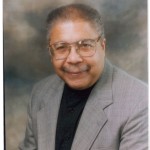Structure and Governance in 1998–99
¶ 1 Leave a comment on paragraph 1 0 By a 93% vote of the members who returned ballots, the new NCFR governance structure was ratified. Ten major changes in NCFR took effect immediately:
- ¶ 2 Leave a comment on paragraph 2 0
- Reduction in Board size from 24 to nine members elected by full membership and all serving 2-year terms.
- Board moved out of details of operations to focus on vision and priorities as articulated by the members of NCFR.
- Board member specialized roles de-emphasized and all members held accountable for organizational issue.
- Board officers reduced to three: President, President-Elect, Secretary/Treasurer
- Functional vice presidents replaced by five at-large members from which Secretary/Treasurer will be appointed.
- President of Association of Councils and Student Representative elected for 2-year terms by full membership.
- More frequent required Board meetings per year.
- All standing committees were sun-setted except the Elections Council and the Fellowship Committee.
- Elections Council reconstituted to include six elected members plus two nonvoting Board members.
- NCFR members to have a more prominent voice extended in the annual membership forum, website, NCFR Report.
¶ 3 Leave a comment on paragraph 3 0 On June 25 and 26, 1999, the Board of Directors met for training in the Carver Model of Board Governance, directed by Susan Stratton of Leading Edge Mentoring, a Carver Model Trainer, and to meet the newly hired Executive Director, Michael Benjamin. An Elections Council was established to ensure qualifications of Board candidates nominated by the Nominations Committee. Cheryl Beuhler was the chair of the committee. A new Board handbook was being developed using the ends/means statements of the Carver Model of Governance.
¶ 4 Leave a comment on paragraph 4 0 At the November 12, 1999, business meeting,William Doherty announced the Ends statements (goals) for MCFR members and the world:
- ¶ 5 Leave a comment on paragraph 5 0
- NCFR members will have the knowledge and skills to study, teach about, and serve families.
- NCFR members are informed about basic and applied methods for studying families, are aware of critical issues for families in society and personal life, and are able to engage in research regarding those issues.
- NCFR members have the knowledge, expertise, and educational skills to disseminate information about family life to diverse audiences.
- NCFR certified family life educators, parent educators, and marriage and couple educators are recognized as qualified, effective, and credential professionals by the public and private sectors.
- NCFR members are informed about the process of policy making and the content of major public policy issues affecting families.
- Families, professionals, and public decision-makers will be better informed about family well-being.
- Public decision-makers have access to knowledge about family issues that helps them identify the implications of decisions for family well-being. (Public decision-makers are individuals or institutions making decisions that have the potential to affect families, including policymakers at the local, state, and federal levels; employers; courts; government agencies; nonprofit organizations; foundations; and religious institutions and faith communities.)
- NCFR and its members are recognized as objective, relevant, and valuable sources of information and resources of family issues.
Gallery
- William Doherty
- Michael Benjamin




Comments
0 Comments on the whole Page
Login to leave a comment on the whole Page
0 Comments on paragraph 1
Login to leave a comment on paragraph 1
0 Comments on paragraph 2
Login to leave a comment on paragraph 2
0 Comments on paragraph 3
Login to leave a comment on paragraph 3
0 Comments on paragraph 4
Login to leave a comment on paragraph 4
0 Comments on paragraph 5
Login to leave a comment on paragraph 5
0 Comments on paragraph 6
Login to leave a comment on paragraph 6
0 Comments on paragraph 7
Login to leave a comment on paragraph 7
0 Comments on paragraph 8
Login to leave a comment on paragraph 8
0 Comments on paragraph 9
Login to leave a comment on paragraph 9
0 Comments on paragraph 10
Login to leave a comment on paragraph 10